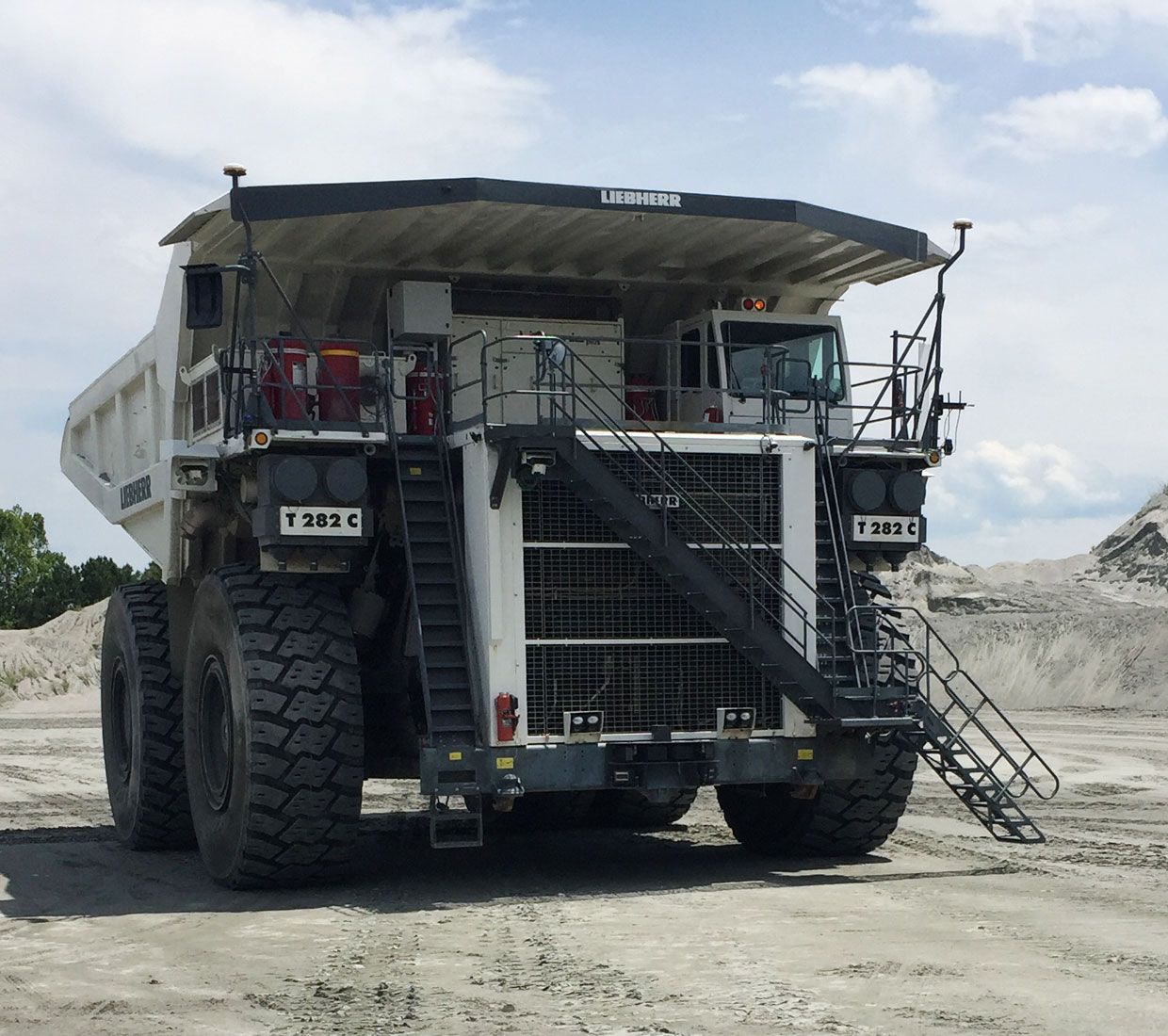A Self-Driving Car Company Bets on Mall Shuttles and Monster Trucks
Perrone Robotics began by automating consumer cars. Now it’s focusing on niche applications instead
Like early mammals scuttering between the legs of tyrannosaurs, a lot of little companies are trying to weave around—and maybe even outlast—the big boys of self-driving technology.
One such example is Perrone Robotics, a small Virginia company that has developed a self-driving package that it says can be quickly adapted to any vehicle. This Swiss Army knife of an AI can give smarts to an existing car, shuttle bus, or truck—even the gargantuan trucks used in mining. Tiny shuttles and behemoth trucks sell in small numbers, and equipping them to drive themselves is beneath the dignity of major players, like Alphabet's Waymo and General Motors' Cruise Automation.
“What we're doing, certainly Waymo and GM Cruise could do, but they are focused on their own agenda. This is our niche, and we are going where we can add real value," says David Hofert, the chief marketing officer at Perrone Robotics.
The company predates today's craze for self-driving technology. It had self-driving prototypes running around its headquarters in Crozet, Va., in the early 1990s, and it was among the original participants in the DARPA Grand Challenges that sparked the robocar revolution. When IEEE Spectrum last wrote about Perrone, in 2015, it was showing off a package that could be quickly dropped into an existing car, using external actuators to turn the steering wheel and depress the accelerator and brake pedals.
“Could we do your car? Absolutely," Hofert says. “But it's kind of expensive for a one-off. Our drop-in costs about [US] $150,000, and you have to add sensors, so altogether, it's a couple hundred thousand."
More promising are one-off jobs like outfitting the Liebherr T 282 C, a veritable truckosaurus for the mining industry. This beast works off-road, in wide-open spaces, where it doesn't have to avoid obstacles such as pedestrians and small dogs.
Even so, the truck will be equipped with an array of radars, lidars, and stereo cameras, as well as GPS and inertial guidance (the kind that counts wheel revolutions to measure distance). These sensors will also allow it to plan two-dimensional paths where no lane markings exist. The test-track phase is now half done, and sometime in the first half of this year, the roboticized truck will go off to its final phase—field trials, probably in either Australia or Arizona, where open-pit mines are common and self-driving technology is particularly welcome.
The appeal of monster robotrucks involves simple labor economics. It's getting ever harder to find truck drivers for two-shift-a-day operations in faraway places. “Say you're a company in Canada, hauling logs out of the woods," Hofert says. “That's where the trees are, in the middle of nowhere, and so you have to pay a lot to get people to go up there."
Closer to home, Perrone will also launch a pilot shuttle service in March in the shopping area of Crozet. Though the driverless shuttle is fully certified by Virginia's road-safety regulators, for now it will hew to downtown Crozet's speed limit of 40 kilometers per hour (25 miles per hour). That's fast enough to complete a circuit every 10 minutes or so.
Ann Mallek, who represents the city's district in the Albemarle County government, says the county, the local transit company, and Perrone are splitting the roughly $200,000 cost of the pilot. If the shuttle pilot goes well, she says, the partners will launch a second project involving “a larger transit vehicle to bring commuters from Crozet to the central shopping area on Sundays." Showing that the larger bus can be retrofitted in the same way as the small shuttle should ease the process of obtaining approval for the second round of tests, she adds.
Elsewhere, there are other roboshuttles already trundling around malls and campuses. Navya, a French company, has a boxy shuttle that follows a set path at the pace of a trot and brakes for frolicking deer and other obstacles; it's now running students around the campus of the University of Michigan, in Ann Arbor. However, each one costs about $290,000, and the maintenance runs in the tens of thousands of dollars per year. EasyMile, also from France, has put its EZ10 shuttle bus on the roads in Helsinki and other cities, although only in slow lanes.
Perrone is betting it's got a niche inside this niche—it alone can take someone else's shuttles and give them eyes, that they might see, and actuators, that they might steer.
This article appears in the March 2019 print issue as “Self-Driving Tech for Non-Cars."
Philip E. Ross is a senior editor at IEEE Spectrum. His interests include transportation, energy storage, AI, and the economic aspects of technology. He has a master's degree in international affairs from Columbia University and another, in journalism, from the University of Michigan.
